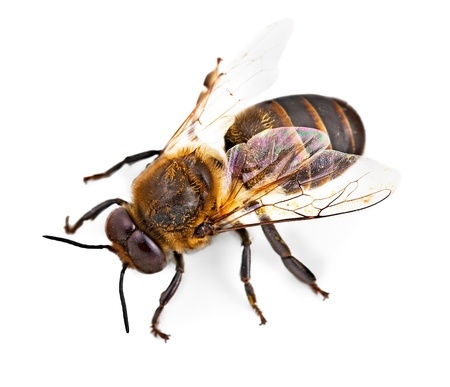Everyone knows from experience the feeling of being jerked in one direction upon making a sharp turn within a vehicle. This pull is known as centrifugal force, and the greater the speed during a turn, the greater the centrifugal force will be. Centrifugal force is the reason why buses and subways are outfitted with railings for maintaining balance. In order to maintain balance, drivers tend to avoid making high speed turns, but sometimes centrifugal force is too great to avoid falling. Centrifugal force is, of course, the reason why animals slow down before making a turn. However, one researcher recently conducted a study that made use of mathematical models and slow motion video footage to prove that bees are largely unaffected by centrifugal force. This means that bees are designed to make sharp turns without having to slow down.
Researchers from the University of Queensland have conducted the first ever study that aims to shed more light on how bees succeed in making sharp turns without slowing down significantly or losing their sense of direction. The researchers temporarily blocked off the entrance to a beehive, which resulted in the formation of a cloud of bees waiting to access their hive. This hive, and the surrounding bees were recorded with several cameras in order to analyze the bee’s flying behaviors. Afterward, the footage was slowed down and mathematically analyzed in order to uncover the secrets to a bee’s ability to make sharp turns without slowing down or being disrupted by centrifugal force. Amazingly, the bees were able to maintain a near constant centrifugal acceleration while turning no matter how sharp the turns or how fast the bees were traveling. Specifically, when bees turn they decrease their speed slightly and just enough to produce an equal amount of centrifugal force with each turn they make. When entering a turn, bees slowed their speed slightly, but very little, and when exiting a turn, the bees sped up. This method of negotiating centrifugal force is similar to how bats, fruit flies and horses make their turns. As a result of the knowledge gained from this study, robotic engineers can use this new information concerning the mechanics of bee flight in order to build more sophisticated aircraft.
Would you be curious to understand a moth’s flight strategies considering how erratic their movements appear?

